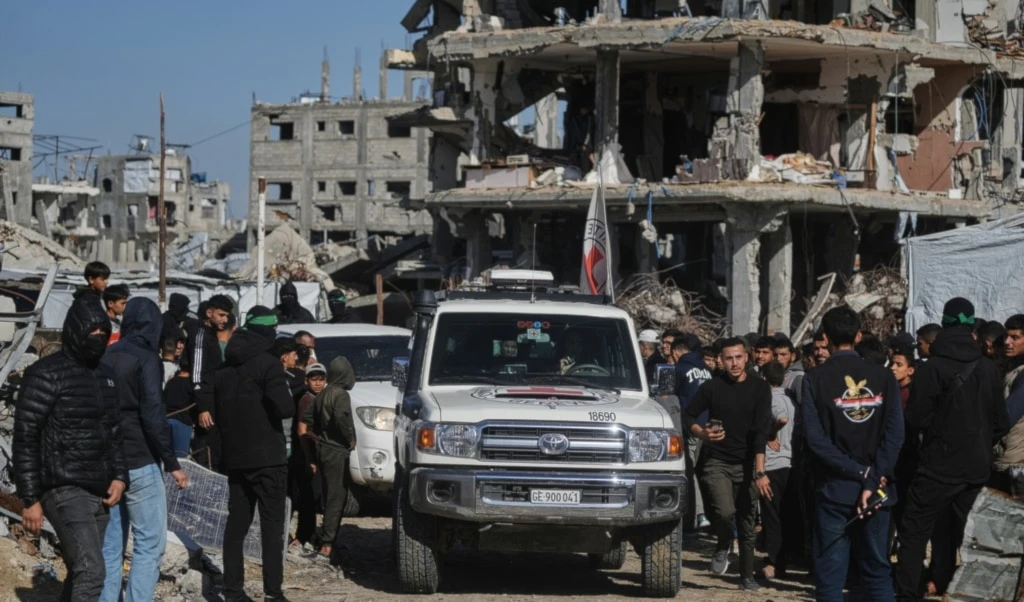M23, Southern Africa bloc agree on troop withdrawal from Eastern DRC
Earlier this month, the 16-member SADC bloc announced plans to end its deployment following a high-level summit that centered on the deteriorating situation on the ground.
-

M23 rebels enter the centre of east Congo's second-largest city, Bukavu, and take control of the South Kivu province administrative office, on Sunday, February 16, 2025. (AP)
The M23 rebel movement has reached an agreement with the Southern African Development Community (SADC) to facilitate the withdrawal of regional troops from eastern Democratic Republic of Congo (DRC), a region plagued by escalating violence and worsening humanitarian conditions.
The deal comes after months of intense fighting between M23 forces and Congolese troops, during which SADC soldiers deployed under the SAMIDRC mission suffered heavy losses.
Earlier this month, the 16-member SADC bloc announced plans to end its deployment following a high-level summit that centered on the deteriorating situation on the ground.
M23, widely believed to be backed by Rwanda, has taken control of large swaths of North and South Kivu since its resurgence in 2021.
In January 2025, the group launched a rapid offensive, capturing the strategic cities of Goma and Bukavu in a matter of weeks—dealing a serious blow to Kinshasa's efforts to retain control over the mineral-rich region.
Fragile Exit
On Friday, senior military officials from South Africa, Zambia, Malawi, and Tanzania met in Goma with M23's military commander, Sultani Makenga. A joint statement released afterward confirmed that M23 would "facilitate immediate withdrawal of SAMIDRC troops with their weapons and equipment" via Goma's airport. The airfield, however, is currently unusable due to damage from the fighting.
To coordinate the pullout, both sides agreed to set up a joint committee to assess the airport's condition. SADC also pledged assistance to restore its functionality.
This agreement between #ARC#ARC & SADC chiefs of defence is a official recognition by SADC governments that it isn’t a terrorist movement or organization. This is the end of the #DRC government narrative, the end of the lies and fiasco of #MONUSCO. VIVA #AFC_M23👏🏾 pic.twitter.com/gMYe5NUp5c
— Jacques Bahimanga (@bahimanga) March 28, 2025
While the size of the SAMIDRC deployment has not been officially disclosed, regional analysts estimate it included approximately 1,300 troops. The mission, launched in December 2023, was intended to support the DRC government in reclaiming territory and stabilizing the east.
Yet the effort has come at a significant cost: South Africa alone lost 14 soldiers in January—most serving under SAMIDRC, though at least two were deployed through a separate UN peacekeeping force. Additional casualties were reported among troops from Malawi and Tanzania.
Read more: UN Security Council demands Rwanda to withdraw troops from Congo
The Congolese government has repeatedly accused Rwanda of arming and supporting the M23 in a bid to exploit eastern Congo's vast mineral resources and fertile land.
Kigali denies the allegations, but a United Nations panel of experts has found evidence suggesting Rwanda maintains a force of approximately 4,000 troops in the region to assist M23 operations.
Meanwhile, the conflict has triggered a massive humanitarian crisis. Since the group's January offensive, nearly one million people have been displaced, including hundreds of thousands of children.
Aid agencies have reported numerous rights violations—ranging from sexual violence and forced recruitment of minors to extrajudicial killings.

 3 Min Read
3 Min Read








